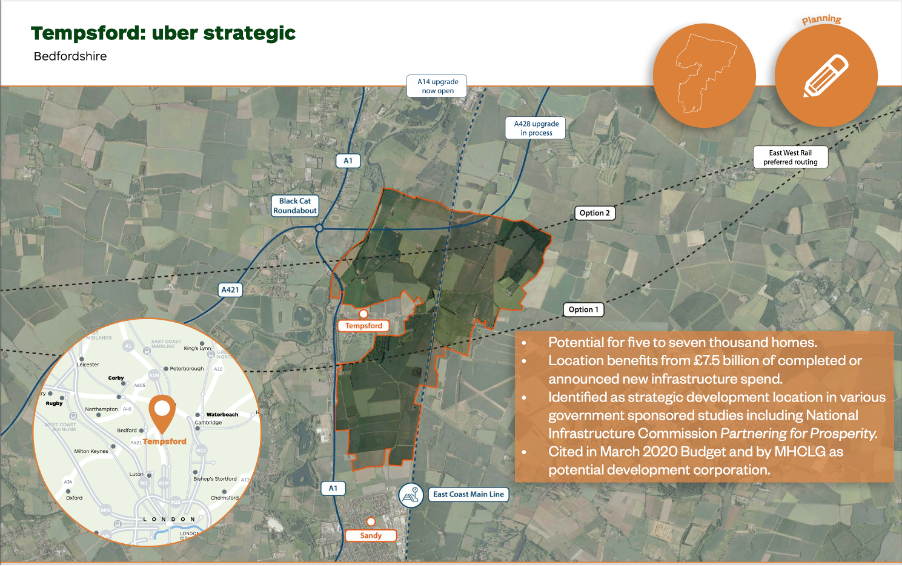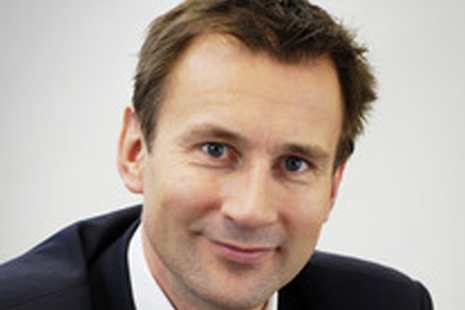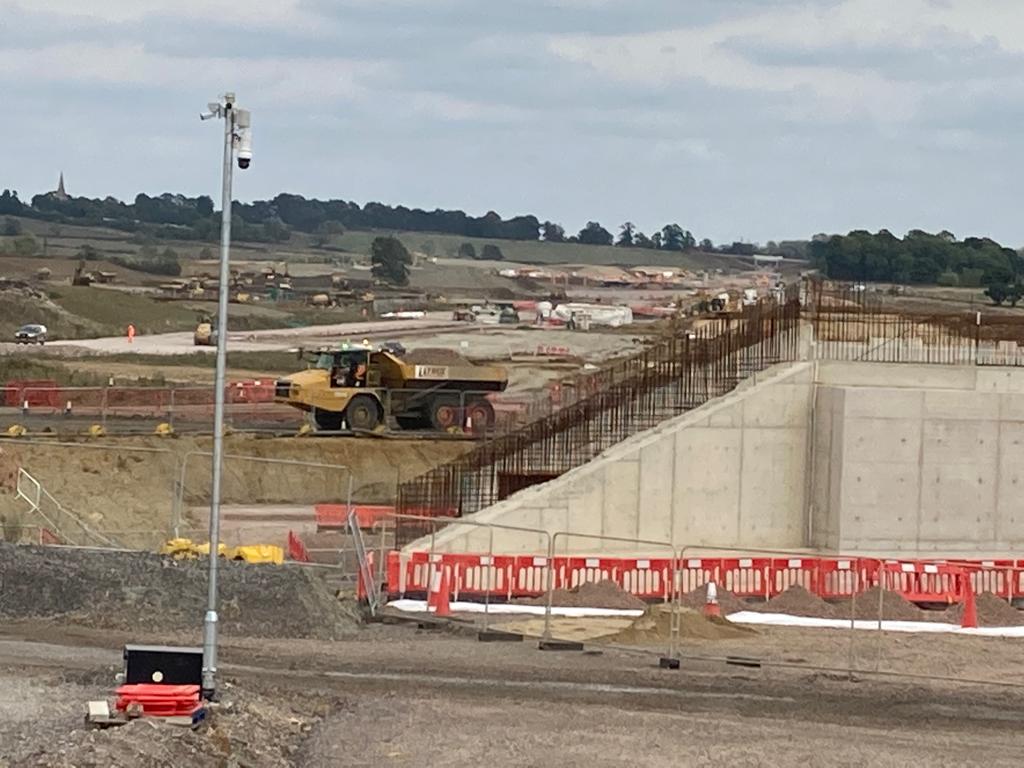Summary
- The Flawed National Infrastructure Commission vision for the EWR.
- Why The Treasury supports it.
- How is the Bedford-Cambridge section supposed to generate more high value jobs?
- No one is responsible for the spatial plan or the real business case for EWR.
The Flawed NIC Vision for EWR
One of the key players behind the creation of the OxCam Arc Concept was Bridget Rosewell formerly of the National Infrastructure Commission. She spoke at the Westminster Social Policy Forum on the 17th of March 2023 about their adoption of the East West Rail.
Here are two relevant extracts from the conference auto transcript:
“And I’ve argued this quite strongly, when we were originally debating the report and the project, we needed to have something which made this more than about two, as I think somebody said to tiny towns, or even to small cities, because it’s not just about a few professors going from one to the other. And a rather elitist view, if you like about what this was supporting, but a much broader perspective about creating an effective labour market, where you had housing that people could afford to live in. And you had much more flexibility that you could say live in Milton Keynes, one of you, one, one behalf of your partnership could go in the opposite direction, one could go in the Cambridge direction, or to go to Cranfield or to Northampton. And then you could change jobs, and you might go another direction. So you had the flexibility to build your careers and to continue to support that economic progress.
And that’s where we came up with the 1 million houses. 1 million [houses], 1 million jobs, actually not so many houses. So that’s that was the kind of argument, the strategic view behind them to us, we felt about why you would need better transport and why you might need, why you might need links of various kinds, including Roads, we’ll come back to roads in a minute, because it was definitely that East West Rail, which was the original hook, partly because that’s what local people, local communities, local authorities had come up with. So then you get into the well, okay, if you do that, how’s that going to work? There were already plans for additional lots of quite big additional housing in Milton Keynes, but we looked also in the report at the capacity for urban extensions in other places, and indeed, redevelopment of brownfield sites, particularly on the eastern side, because you’ve got redundant airfields and those kinds of things.”
Do you remember being asked by local politicians about whether you supported EWR? Bridget Rosewell went on..
“And what’s the mechanisms by which you can then think about, okay, if you put housing, how does that support use of the railway? And what are the revenue implications? I’ve argued strongly elsewhere? And over years that if you can’t cover your operational costs of a railway then or indeed any other well, railways because you’re selling tickets, if you can’t cover your operational costs, then why are you doing it? So you needed to show that it would support that housing in that housing development, we’ve argued that with Crossrail instead of Crossrail two, incidentally as well. So it’s that labour market and flexibility. Generating the trips out of those trips get paid for and is it road versus rail. We did support the expressway at the time.”
The auto transcript isn’t perfect, but hopefully you get the spirit of what she said. The vision is effectively a single conurbation from Oxford to Cambridge with housing and a flexible labour market, at least for people who live in Milton Keynes.
It was understood at an early stage that the railway could not fund itself based on ticket sales. That is something we have flagged on this blog several times and it explains why the secret WebTAG business case should a) show that it is not self-funding and b) will probably never be published or at least not until all the decisions have been made (was this true of the EWR western section). c) the current Secretary of State for Transport and the Rail Minister, have both complained about the cost of railways and whether they can fit new ones in their frozen capital budget.
Why The Treasury Support it
But the Treasury support building the railway. Here is an extract from their Spring Budget Policy Paper 2023
“Life sciences
The UK is a world-leader in the life sciences industry, with significant R&D hubs such as Cambridge’s Biomedical Campus. East West Rail – the rail line joining Oxford and Cambridge – will support further growth in life sciences and other high-productivity sectors across the region, connecting businesses and talent. In May, the government will confirm the route for the new Bedford-Cambridge section, and will provide capacity funding to support local authorities to develop their plans for strategic economic growth around new stations.”
Reading between the lines, the HM Treasury officials (whoever they are) see that EWR means more high productivity jobs mean more tax revenue. and have advised successive chancellors of their views. Who knew that there were rail experts in the Treasury?
EWR also mean more houses – the “talent” have to live somewhere.
Consider a senior scientist or a manager in the life sciences sector paid £60,000/year. They will pay £16,547 in Income Tax and National Insurance. We should add VAT on what they buy (£8,690); Employer’s National Insurance (£8,280) and pro-rated Corporation Tax (say £3,000 on a 20% profit at 25%). That leads to a total tax revenue of around £36,500. If EWR could enable 50,000 such jobs, it would generate tax revenue of £1.83 billion per year. Of course, these people also generate costs for the government as well (Health service, water supply, education etc). Perhaps at this level of salary we might assume that they are net contributors to the government but only around 10% of salary. If so 50,000 of them would contribute £0.3 billion to the economy net of the costs. The higher the salary the bigger the net contribution.
This net contribution must pay off the capital cost of the railway and much of the operating costs since they will not be covered by ticket sales. The EWR Option report estimated that the recurring cost of option E would be £2.4 Billion over 60 years in 2010 prices. A figure which had increased by 1100% since the previous estimate a year earlier. It’s £40million/year in 2010 prices, adding 43% inflation that’s £57.2million/year in Feb 2023 prices and only slightly less than EWRCo. are currently spending doing whatever it is that they are currently doing.
The deputy prime minister recently stated that EWR would produce “a projected increase in economic output by over £100 billion by 2050”. That’s 50 times bigger than the £1.83billion in the previous paragraph. Most of this projected growth is clearly nothing to do with EWR. See our previous article on this. I suggest that much of it is also a Treasury/Property developer fantasy. It would certainly involve paving over much of the land in our area.
How is the Bedford-Cambridge section supposed to generate more high value jobs?
Well, it can allow people to commute from new houses around EWR stations into work near the three Cambridge stations (north, central and the new south station). The station with the most space for new offices is Cambridge North Station due to the Northeast Cambridge development and the release of the Cambridge Airport area around 1000m from the north station.The Cambridge Biomedical Campus and Cambridge South Station are already hard up against the Green Belt.
But which EWR stations offer space for new houses? It’s really Cambourne and Tempsford with the current proposal, although CBRR have also proposed Northstowe. Both Cambourne and Northstowe are already served by approved (Cambourne) or built (Northstowe) guided busways which would compete with the EWR to a greater or lesser extent. There are 1850 houses in the Greater Cambridge local plan around Cambourne which might be moved if EWR is built, but that’s not enough to move the needle on the business case for the railway. Extensions to the local plan to enlarge Cambourne or indeed Northstowe are also possible if the central government were to introduce development corporations.
Can Tempsford “save the day?”
If you look at the proposed sites for the Tempsford Station in the EWRCo. 2021 Consultation they are all in a line next to the East Coast Main Line. They also currently don’t have any road access and are surrounded by agricultural land (See figure 1).


Figure 1 Tempsford Station sites from the EWRCo. 2021 Consultation and approximately the same area on Google Maps

Figure 2 Urban and Civic Plans from 2020 report
Urban and Civic have purchased options on 2113 acres of land around the site of this proposed new Tempsford Station and have plans for up to 7000 houses (see Figure 2). That’s a density of only 8 dwellings per hectare (dph). For comparison, Cambourne achieved 40 dph. That would then be 35,000 houses. Early EWR related conversations with CBRR in 2019 talked about 50,000 houses around Tempsford. However, the Tempsford site was dropped in the Central Bedfordshire local plan. In what follows I still assume 50,000 houses at Tempsford.
Cllr Stephen Fergusson also looked at the local plans around St. Neots in relation to EWR and explained how the whole area could become a single conurbation. A dead dormitory town for Cambridge commuters. (See Figure 3). We already have plenty of those for London commuters further south.

Figure 3 Cllr Fergusson’s October 2021 Article in the Hunts Post
If Tempsford is so crucial to the treasury-driven business case for this project, why have we heard so little about it from them? Tempsford would become a city comparable in size to Cambridge. Of course, if you are making the case for a project, you naturally talk about the upside, but not the downside. It seems that (correctly) houses with specific green field locations are considered to be a downside. The loss of prime agricultural land would be huge.
Here are my observations.
- This Tempsford site will have good access to the new Black Cat to Caxton Gibbet dual carriageway so access to science parks around Cambridge North Station by road will be fast (32 minutes). Will EWR compete on time and the marginal cost of driving (including first and last mile)? No, it won’t. As Bridget Rosewell said this could be an economic success but not because of the railway. Electric cars in the 2030s will still allow you to go shopping on the way home from work or drop off a child at school on the way.
- Who is responsible for making sure that this housing development happens and that it really will serve the business case of EWR? I can’t think of anyone, there is no master spatial plan and hence no clear responsibility for the real business case. The new Oxford Cambridge Partnership have not been asked to do a plan. MLUHC have stepped back from the OxCam Arc. EWRCo./DfT don’t feel any responsibility for this (they were recently asked how many houses at Tempsford and responded “can’t say”). Who is it? The treasury? The department for business and trade?
- The construction of 50,000 houses would emit 4.25Mega tonnes of CO2 (at 85 tonnes per house). According to the Tyndall institute the Bedford area has 4.8MtCO2 remaining in its budget for 1.5C of global warming from the UN Paris Agreement. Tempsford would be a disaster.
- Left to the market, Urban and Civic’s proposal is only for 5,000 to 7,000 houses which would not be enough for EWR.
- How many of these houses would be bought by people regularly using the EWR to get to high value jobs in Cambridge? Wouldn’t most of them go to people going elsewhere – for example London on the ECML; people driving to Cambridge and Bedford people who just work in Tempsford. Some will be people that move from similar jobs elsewhere in the country hence they will be no new net contribution to the Treasury.
No one is Responsible for the Spatial Plan or the Real business case for EWR
It seems that the EWR business case can be greatly improved by not actually building the railway since it adds little value. That way local planners can choose where to put new housing (hopefully on brown field sites first) and solve transport problems locally with less environmental damage and cost.
Who needs Bridget Rosewell’s single flexible labour market from Oxford to Milton Keynes to Cambridge? As we have said before on this blog, the OxCam Arc is such a big area its agglomeration factor compared to a city is very low.
Here is other question from Prof. David Rogers to Bridget Rosewell about her flexible Oxford to Cambridge labour market. He asked her where is the 15 minute neighbourhood in all this? (it’s in the transcript).
“Okay, that’s a very, very big question, isn’t it? Apart from anything else, which when although we are seeing some changes to patterns of work, there are lots of areas where people if they go to work, still need to go somewhere to do that work, particularly laboratory work and all of these sorts of things. Okay, if you’re gonna write up the results, you might stay at home. But there’s still an enormous amount of getting together that I think we’re increasingly finding, as people sort of recover from the pandemic and it’s and it’s how it’s played out.”
She labelled it as big question and then proceeded to talk about something else.
An Oxford based spatial planner called, Dr. Valler also presented at the WSPF conference here are his slides. He appealed to the conference that the OxCam Arc needed a spatial plan.
The fractured governance of the region between Oxford and Cambridge, or even Between Bedford and Cambridge mean that no-one can produce an enforceable spatial plan except perhaps DLUHC, but they clearly are not planning to do so.
EWRCo. and property developers are selling HM Treasury a story of increased tax revenue from building the railway. Who cares if people use EWR so long as it releases more agricultural land for building housing? Who cares if the business case works so long as EWRCo. get to complete the project they are paid to complete?
Going back to the question in the title of this post. No-one owns the spatial plan; hence no-one owns the business case which includes the East West Railway.
We are about to waste a lot of public money and cause a lot of environmental damage on a project which has no proven benefits. When in years to come it proves to be a mess, no one will take responsibility.






